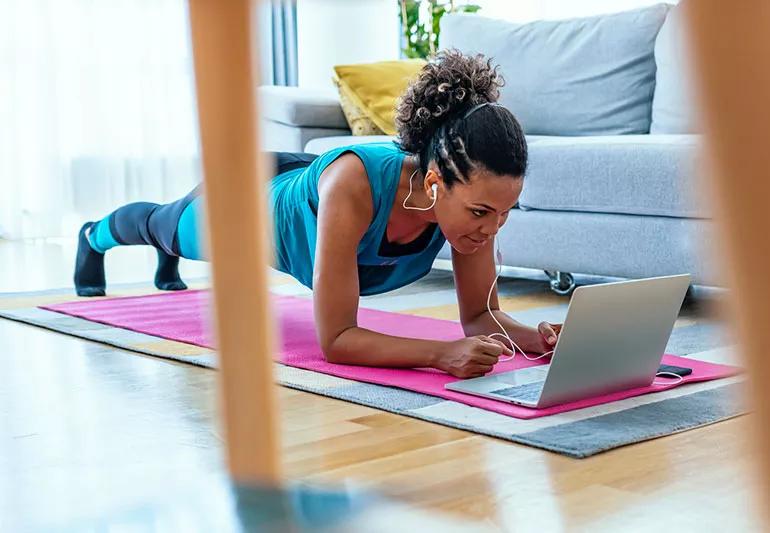Plus 5 best tips to help you avoid injury

By Sara Miniaci-Coxhead, MD
Advertisement
Cleveland Clinic is a non-profit academic medical center. Advertising on our site helps support our mission. We do not endorse non-Cleveland Clinic products or services. Policy
The leaves have fallen and blown away, your skis are waxed, and you’ve stockpiled sweaters and vests. Now all you need is that first snowfall. But there’s one more step to take before ski season begins: Get into shape.
Research shows that preconditioning before ski season will help improve your endurance, muscular strength and reaction times, and decrease your risk of injury. Injury risk rises dramatically with increased muscle fatigue, as our ability to maintain technique and form is compromised. So now is the time to get out those tennis shoes and whip yourself into shape.
Initiating a strength training program will help you to build strength and increase muscular endurance, prolonging the time it takes to reach muscle fatigue. Essentially, you train your muscles to work more effectively by increasing your body’s ability to remove lactic acid.
Lactic acid is a byproduct of exercise that causes the muscle burn skiers often feel in the thigh. So strength exercises for your legs, such as the leg press or traditional wall squat, should be part of your workout. Round out your routine with some bridges, or hamstring curls with a machine or on the exercise ball.
As skiers, we typically think working our legs is sufficient preparation for the season. While leg strength correlates significantly with performance on the slopes, our core musculature — abdominals, hips and lower back — helps maintain balance and proper form throughout a day of skiing.
Advertisement
Planks, “supermans” and basic or bicycle crunches are great core exercises to incorporate into your workout. Bridges and side hip raises will bring the focus to the hips and glutes, which are essential stabilizer muscles. Core exercises are especially essential for every snowboarder’s workout to improve overall stability. These exercises can be performed on the floor or on a stability ball for more of a challenge.
For your upper body, try seated rows or tricep kickbacks to strengthen muscles for the pulling motion skiers often use to move across flat terrain or up a small hill. Snowboarders will find it beneficial to focus on chest and arm strength as well because their sport requires more upper body strength.
Aerobic exercises of longer durations, like running, biking and using the elliptical trainer, should be done to improve cardiorespiratory endurance and overall fitness. Interval training — short bursts of intense activity alternating with lower-intensity active recovery — also is beneficial for skiers because it simulates the short bursts of activity typically seen in tacking a steep incline. For more advanced exercisers, plyometrics such as squat jumps can be incorporated to achieve the same result.
Even if you have been preparing for the season, it is a good idea to keep general guidelines for injury prevention in mind:
Advertisement
Learn more about our editorial process.
Advertisement

To avoid swimmer’s eye, wear goggles, use eye drops and flush out your eyes with fresh, clean water when irritated

Keep kids safe while they swim by staying vigilant and setting up a safe pool environment

Having a well-rounded, healthy nutrition plan is just as important as staying consistent with your exercise routine

Swimming is an essential life skill — kids should start learning to swim by age 4

Whether you’re cycling consistently or occasionally, it’s important to have safety essentials like a helmet, shirts with sleeves, eye protection and more

The mental block is a brain-body disconnect that causes gymnasts to lose their sense of space on flips

A more open conversation on athletes and their mental health needs is overdue

You can reduce your risk by not swallowing water, and showering before and after swimming

If you’re feeling short of breath, sleep can be tough — propping yourself up or sleeping on your side may help

If you fear the unknown or find yourself needing reassurance often, you may identify with this attachment style

If you’re looking to boost your gut health, it’s better to get fiber from whole foods